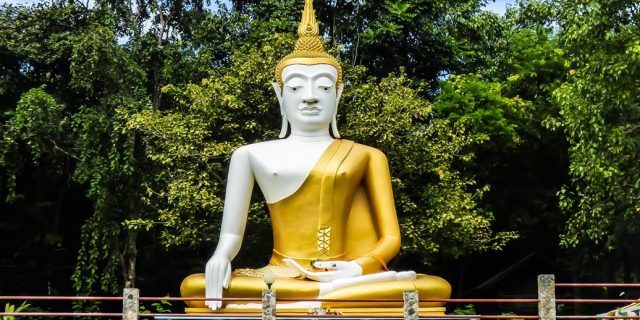
Yoga is an ancient Indian practice of movement, breathing, mental and spiritual exercises, and well-known around the world. There are many types of Yoga, with many different aims. Yoga is often considered a “sister science” of Ayurveda Medicine and Indian Tantra.
The Sanskrit word Yoga means “to attach,” “discipline,” “join,” or “yoke,” and this is actually an appropriate explanation of this ancient practice. It’s simply a discipline, not necessarily only a physical one, but as mentioned in the previous paragraph, it can also be a mental or spiritual practice.

Although there’s no common consensus of the period wherein Yoga emerged, the practice starts to get actual form in India between 200 BCE and 500 CE. This knowledge is derived from various Indian scriptures of this period that mention Yogic practices.
In the first millennium CE, Indian Yogic practices, together with Buddhism, slowly spread throughout Asia, for instance to Nepal, Tibet, Myanmar, Thailand, China, and Japan. In each country or region, Yoga got a unique flavor through emphasis or omission of certain Yogic elements, and through blending with already locally existing physical, mental and spiritual practices.
Nevertheless, it’s clear that Yoga in its beginnings was seen as an aid to come to a better meditation practice and finally to spiritual enlightenment, freedom of earthly bondage, self-realization, or Moksha. That is, Yoga had (and still often has) an explicit spiritual goal, although, in the West today, Yoga is often only seen as a means to gain or maintain physical fitness and health.
Yoga practices include pranayama (breath exercises), meditation, concentration, contemplation, Samadhi, asanas (postures and poses), transitions, mantras, yantras, bandhas, mudras, mandalas, and chants, among other elements.

Each pose (asana), each breathing technique, or each distinct mantra or mudra, for instance, has different effects and results, and there are a great number of exercises to alleviate or cure very specific physical, emotional, and mental dysfunctions, to attain longevity, or to come to certain desired (or needed) states of awareness and higher states of consciousness.
Some well-known types of traditional Yoga systems are Hatha Yoga, Ashtanga Yoga, Tantra Yoga, Laya Yoga, Kundalini Yoga, and Kriya Yoga. Examples of some of the more philosophical or religious/spiritual types of Yoga are Jain Yoga, Karma Yoga (Yoga of Work), Jnana Yoga (Yoga of Knowledge), and Bhakti Yoga (Yoga of Devotion).
In the past few decades, with the rise of the popularity of Yoga around the world, many new types and styles have arisen, such as Bikram Yoga, Iyengar Yoga, Sivananda Yoga, Pregnancy Yoga, Postnatal Yoga, Vinyasa Yoga, and Yin Yoga, to just name a fraction of the vast number of new Yoga variants.

















